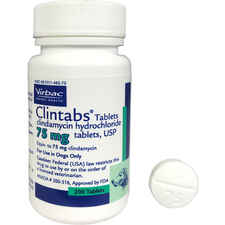Strongyloides in dogs
Strongyloides In Dogs. Strongyloidiasis is an intestinal infection with the parasite Strongyloides stercoralis S. The detection of serum specific antibodies. Fenbendazole Fenbendazole 20-50 mgkgday for 2-3 weeks unlicensed use in dogs. Vertical transmission of larvae is a major pathway in the life cycle of several species of Strongyloides but evidence for it occurring in humans or dogs with Strongyloides stercoralis is absent.
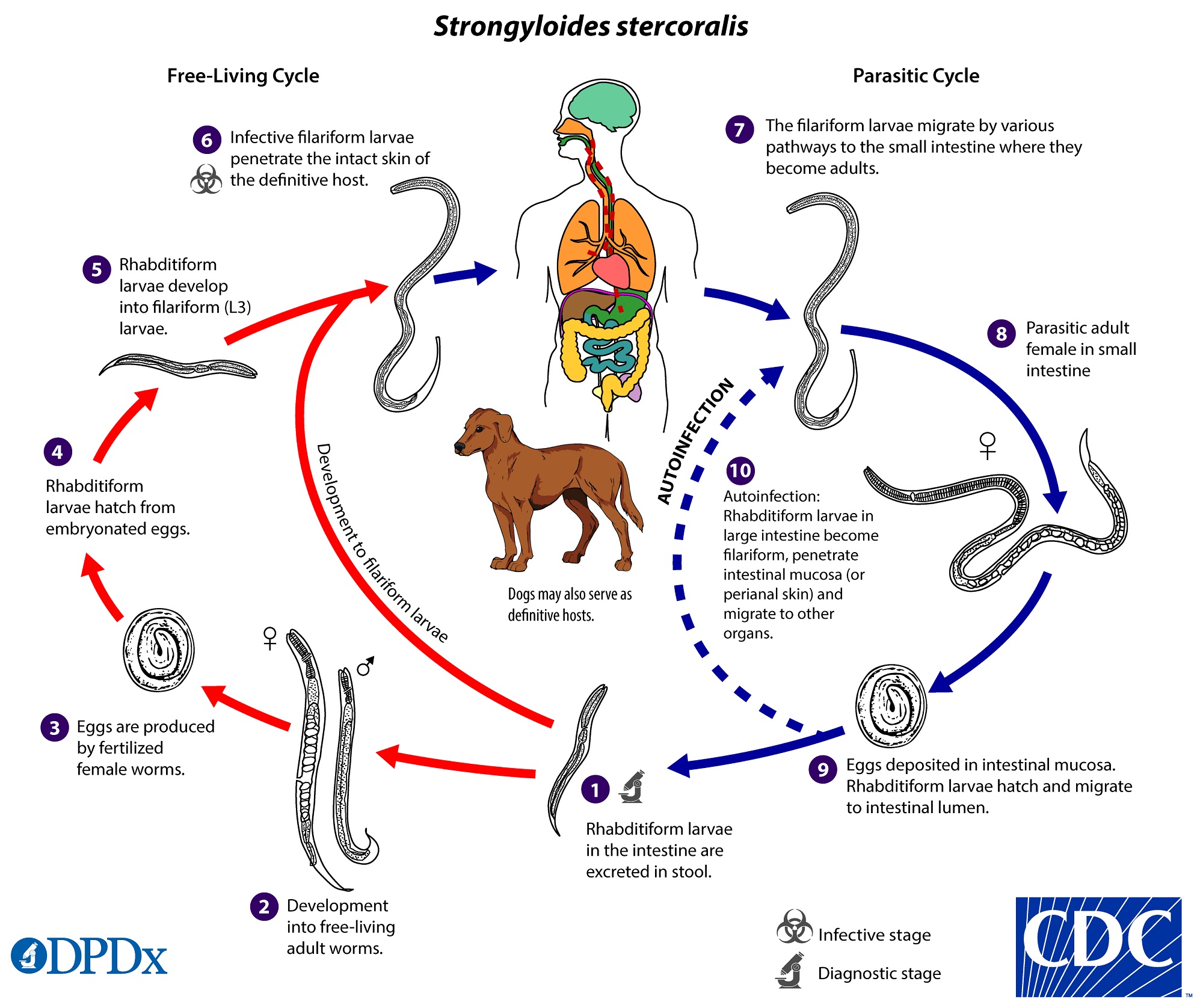 Cdc Dpdx Strongyloidiasis From cdc.gov
Cdc Dpdx Strongyloidiasis From cdc.gov
Dogs become infected when they ingest infective larvae through mammary milk or when these larvae actively penetrate into the dogs skin. Strongyloides can be transferred to puppies through the mothers milk but most infections result after direct exposure to feces from other infected animals. Also infecting wild canids and weasels and. Currently there is limited information available. Stercoralis and some species of hookworms infect canids and therefore present both environmental and zoonotic sources of transmission to humans. Strongyloides is a small thin parasitic nematode that infects the small intestines of dogs and cats.
Strongyloidiasis in Dogs.
Parasitic nematodes strongyloides is commonly known as threadworms or pinworms and infections range from mild to severe and some may go undetected. Hyperinfective strongyloidiasis involving the threadworm Strongyloides stercoralis is well known in humans and primates. Also infecting wild canids and weasels and. Stercoralis experimentally but natural infections until recently have only been reported with Strongyloides tumefaciens North America. Strongyloides stercoralis syn. Strongyloididae infestation is occasionally recognized in a range of vertebrate hosts including humans and dogs and causes widespread clinical disease in infected individuals ranging from asymptomatic to fulminating respiratory or gastrointestinal disease.
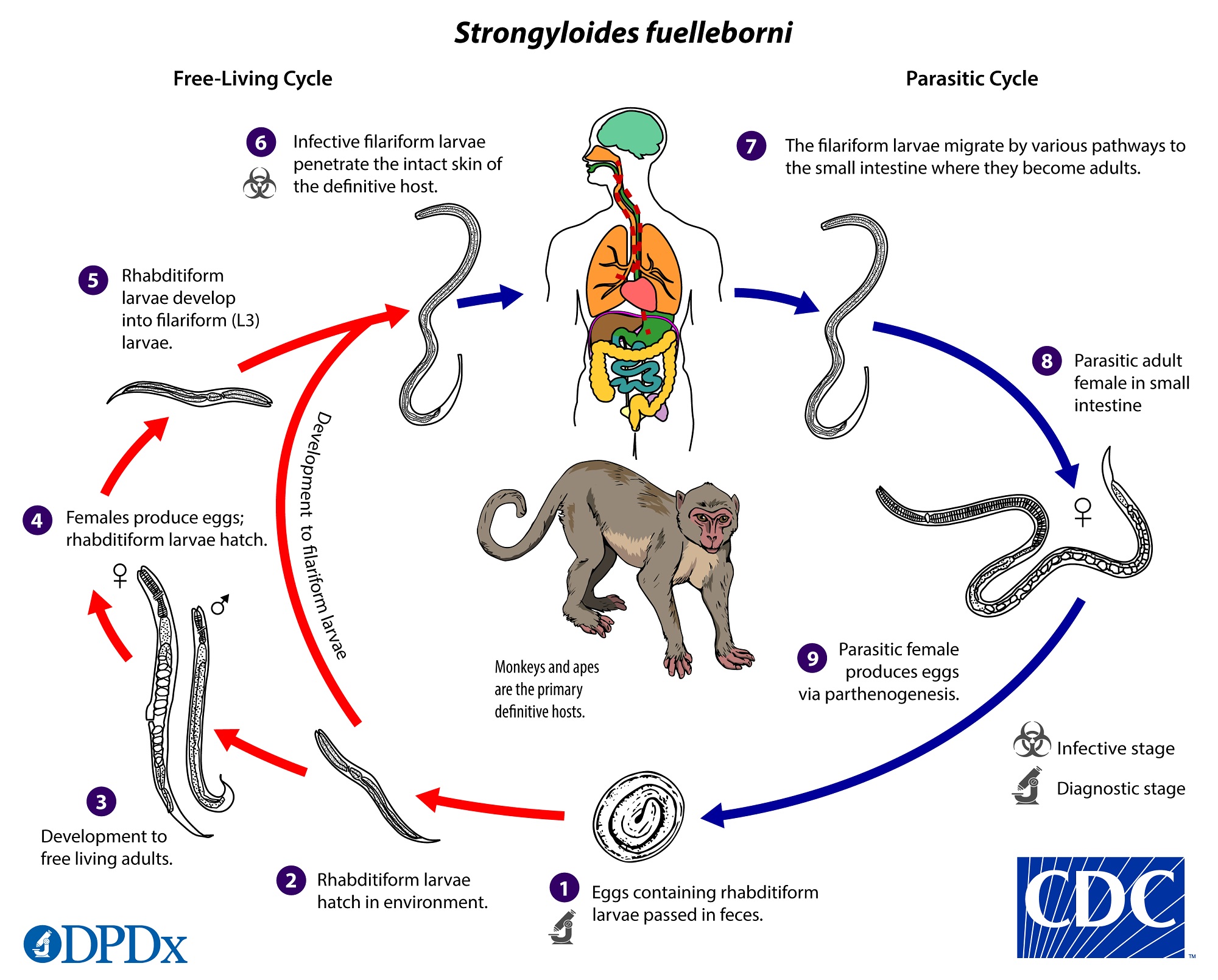 Source: cdc.gov
Source: cdc.gov
Strongyloidiasis in Dogs. This together with the low reliability of the Baermann sedimentation as a gold diagnostic standard makes the assessment of the true prevalence of infection challenging. Hyperinfective strongyloidiasis involving the threadworm Strongyloides stercoralis is well known in humans and primates. The most common species to infect cats is Strongyloides tumefaciensis while Strongyloides stercoralis can infect dogs and cats. India Strongyloides planiceps Japan.
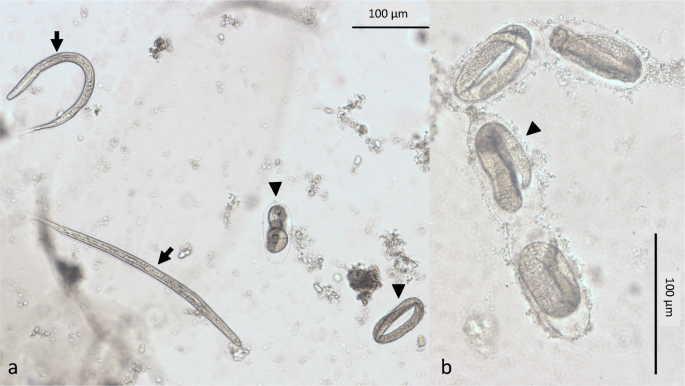 Source: link.springer.com
Source: link.springer.com
Strongyloides stercoralis found in imported dogs household dogs and kennel dogs in Iceland. Infect a range of domestic animal species worldwide andclinical disease is most often encountered in young animals. Strongyloides is a small thin parasitic nematode that infects the small intestines of dogs and cats. Pelodera strongyloides dermatitis dog Pelodera is a free-living nematode that can infect the skin of animals. Dogs are infected withStrongyloides stercoralis while cats are infected with different species according to geographical location Strongyloides felis Strongyloides tumefa-.
 Source: semanticscholar.org
Source: semanticscholar.org
Stercoralis and some species of hookworms infect canids and therefore present both environmental and zoonotic sources of transmission to humans. It is thought that each species of host is infected by a different strain or variety of the parasite. The detection of serum specific antibodies. The infection can be transmitted from dogs to humans and vice versa. Pelodera strongyloides dermatitis dog Pelodera is a free-living nematode that can infect the skin of animals.
 Source: cdc.gov
Source: cdc.gov
Signs include dermatitis and alopecia and diagnostic testing includes biopsy of affected regions. Canine strongyloidiasis is a parasitic infection caused by the nematode Strongyloides stercoralis and presents a great zoonotic potential. Strongyloides stercoralis syn. Stercoralis is relatively host-specific but there is a potential for transmission to. To determine whether a fulminant pattern of nematode deve.
 Source: youtube.com
Source: youtube.com
Hyperinfective strongyloidiasis involving the threadworm Strongyloides stercoralis is well known in humans and primates. Vertical transmission of larvae is a major pathway in the life cycle of several species of Strongyloides but evidence for it occurring in humans or dogs with Strongyloides stercoralis is absent. Currently there is limited information available. Strongyloidiasis is an intestinal infection with the parasite Strongyloides stercoralis S. Strongyloidiasis in Dogs.
 Source: petcoach.co
Source: petcoach.co
The most common species to infect cats is Strongyloides tumefaciensis while Strongyloides stercoralis can infect dogs and cats. Dogs are infected withStrongyloides stercoralis while cats are infected with different species according to geographical location Strongyloides felis Strongyloides tumefa-. The infection can be transmitted from dogs to humans and vice versa. The aim of this paper is to report cases of the intestinal. Strongyloides stercoralis infections are often asymptomatic in dogs.
 Source: link.springer.com
Source: link.springer.com
Stercoralis each of 3 female dogs was infected with filariform larvae at a different stage of the reproductive cycle ie. In addition to infecting humans S. The worms are almost transparent and all but impossible to see grossly at necropsy. Typically only the female nematode will be present in the dogs intestinal lining causing among other things severe diarrhea. Dogs may be infected without showing symptoms but for puppies and dogs with a weakened immune system the disease can be serious and even fatal.
 Source: semanticscholar.org
Source: semanticscholar.org
Infect dogs cats and humans. Also infecting wild canids and weasels and. We describe a case of strongyloidiasis in a. The infection can be transmitted from dogs to humans and vice versa. In addition to infecting humans S.
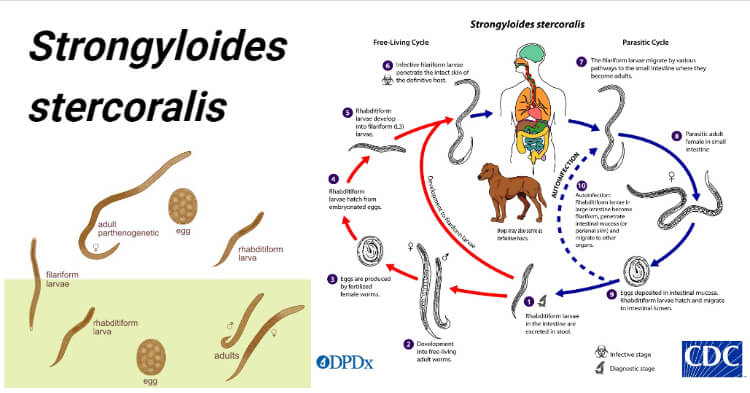 Source: thebiologynotes.com
Source: thebiologynotes.com
Stercoralis is relatively host-specific but there is a potential for transmission to. Dogs may be infected without showing symptoms but for puppies and dogs with a weakened immune system the disease can be serious and even fatal. The worms are almost transparent and all but impossible to see grossly at necropsy. Stercoralis is relatively host-specific but there is a potential for transmission to. Dogs are infected withStrongyloides stercoralis while cats are infected with different species according to geographical location Strongyloides felis Strongyloides tumefa-.
 Source: researchgate.net
Source: researchgate.net
Dogs may be infected without showing symptoms but for puppies and dogs with a weakened immune system the disease can be serious and even fatal. Strongyloides stercoralis occurs worldwide in dogs and infects people non-human primates and wild canids. Strongyloidiasis as a result of Strongyloides stercoralis Rhabditida. The most common species to infect cats is Strongyloides tumefaciensis while Strongyloides stercoralis can infect dogs and cats. This together with the low reliability of the Baermann sedimentation as a gold diagnostic standard makes the assessment of the true prevalence of infection challenging.
 Source: youtube.com
Source: youtube.com
Both Strongyloides stercoralis and hookworms are common soil-transmitted helminths in remote Australian communities. Strongyloidiasis in Dogs. To determine whether a fulminant pattern of nematode deve. Stercoralis each of 3 female dogs was infected with filariform larvae at a different stage of the reproductive cycle ie. The Journal of Parasitology publishes on basic or applied aspects of general veterinary or medical parasitology and epidemiology.
 Source: researchgate.net
Source: researchgate.net
Strongyloides canis Common name. Strongyloides stercoralis are parasites that infect dogs cats and their people. Pelodera strongyloides dermatitis dog Pelodera is a free-living nematode that can infect the skin of animals. Although this nematode also frequently parasitizes dogs canine hyperinfective strongyloidiasis has not been reported. The detection of serum specific antibodies.
If you find this site serviceableness, please support us by sharing this posts to your preference social media accounts like Facebook, Instagram and so on or you can also save this blog page with the title strongyloides in dogs by using Ctrl + D for devices a laptop with a Windows operating system or Command + D for laptops with an Apple operating system. If you use a smartphone, you can also use the drawer menu of the browser you are using. Whether it’s a Windows, Mac, iOS or Android operating system, you will still be able to bookmark this website.

